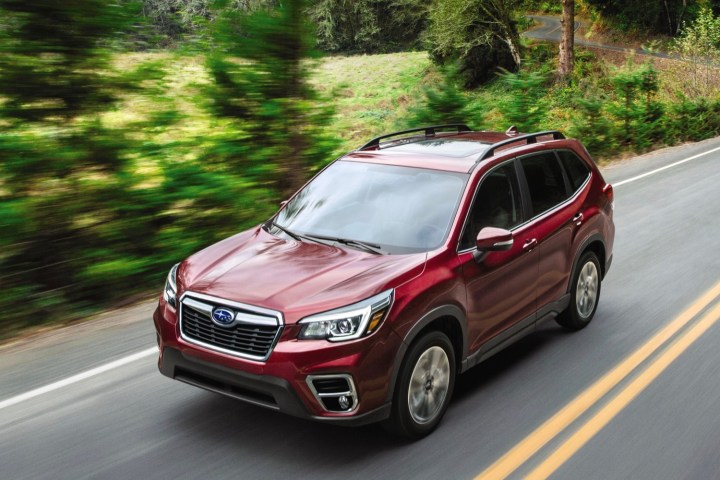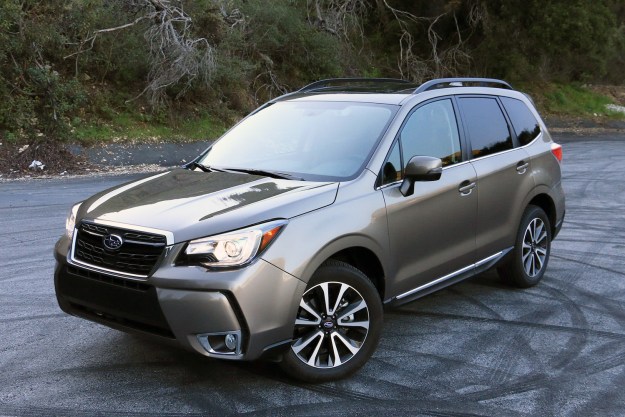 The Subaru Forester was redesigned for the 2019 model year, so it’s not surprising that Subaru has kept changes for 2020 to a minimum. The Forester does get some additional tech features as it continues to fight the Ford Escape, Honda CR-V, Nissan Rogue, and Toyota RAV4 for crossover buyers’ dollars.
The Subaru Forester was redesigned for the 2019 model year, so it’s not surprising that Subaru has kept changes for 2020 to a minimum. The Forester does get some additional tech features as it continues to fight the Ford Escape, Honda CR-V, Nissan Rogue, and Toyota RAV4 for crossover buyers’ dollars.
The 2020 Forester gets Rear Seat Reminder as standard equipment. The feature is designed to prevent drivers from leaving children or pets unattended in the back seats. The Chevrolet Equinox and Nissan Rogue — two of the Forester’s direct competitors — already have their own versions of this feature.
The Forester also comes standard with Subaru’s EyeSight system, which uses a stereo camera mounted near the top of the windshield to enable driver aids like adaptive cruise control. For 2020, the Forester’s version of EyeSight adds lane centering and lane-departure prevention to its bag of tricks. Stepping up from the base trim level to a Premium or Sport model nets blind-spot monitoring and rear cross-traffic alert. The Limited trim level adds headlights that turn with the steering wheel.
Subaru also offers DriverFocus, which uses a driver-facing camera to check for distraction, and can also assist the car’s systems in remembering driver preferences for things like seat position and climate control. The feature is only available on the top Touring trim level, which also features reverse autonomous braking.
Subaru didn’t make any mechanical changes for 2020, so all Forester models continue to use a 2.0-liter boxer-four engine and continuously variable transmission (CVT). The engine produces 182 horsepower and 176 pound-feet of torque. Given the pokey acceleration of our last Forester test car, we’re still hoping Subaru will add the turbocharged engine from the 2020 Legacy as an option. All-wheel drive remains standard, something that can’t be said of most of the Forester’s rivals.
Pricing for the 2020 Subaru Forester starts at $25,505 (all prices include a mandatory $1,010 destination charge). Apple CarPlay and Android Auto are standard, with a 6.5-inch touchscreen on base, Premium, and Sport trim levels, and an 8.0-inch screen on Limited and Touring models. The top Touring trim level starts at $35,605, and includes features like an upgraded Harman Kardon audio system and navigation. If a wagon is more your style, keep in mind that the redesigned 2020 Subaru Outback is about to hit showrooms as well.
Editors' Recommendations
- 2022 Nissan Pathfinder first drive review: More tech, more toughness
- 2021 Subaru Outback vs. 2021 Subaru Forester
- Subaru’s hard-wearing Crosstrek gets peppier for the 2021 model year
- Apple’s working on a way to not charge more for its redesigned, 2020 5G iPhone
- 2020 Nissan Rogue Sport gets more expensive, but adds more driver-assist tech


